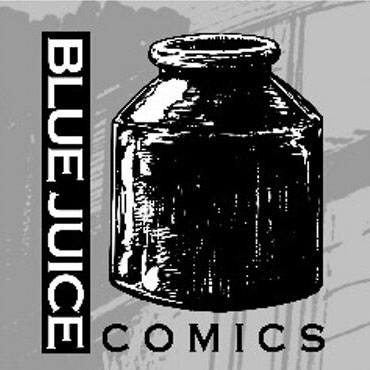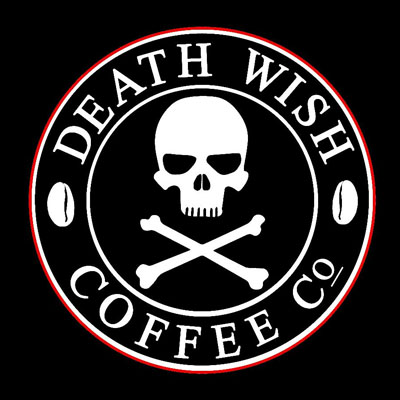Bob Pflugfelder on "Inspiring Science Through Chaos"
Anthony: Welcome. This is Expert Open Radio, and I'm Anthony Longhitano, a volunteer with TEDxAsburyPark. Today we are talking with Bob Pflugfelder, who is a speaker at this years TEDxAsburyPark conference, which will take place on May 18th. Welcome, Bob.
Bob Pflugfelder: Hello, Anthony. Good to talk to you.
Anthony: Likewise. I'm glad you could be with us thing morning.
Anthony: Bob, why don't we get started, maybe you can tell us a little bit about yourself and the topic that you're going to be speaking about at this year's conference.
Bob Pflugfelder: Sure. So the day job for me is actually as an elementary school science teacher, which is somewhat unique, but every now and then I get to go from an audience of 25 or so to an audience of millions doing science demonstrations on nighttime talk shows and daytime talk shows and presentations. And so I'm going to try to bring a little bit of that science fun to Asbury Park.
Anthony: That's great. We're looking forward to it. And what is the title of your talk?
Bob Pflugfelder: So the title of the talk is “Inspiring Science Through Chaos”, and the whole idea of being able to embrace chaos for a TED Talk came from realizing that in many of the demonstrations that I do, especially on television, chaos is almost a given at some point in my demonstrations. We looked back at about 15 different appearances on Jimmy Kimmel Live, and one of the constants in all of those segments was that things flew through the air. It may have been foam, it may have been film canisters, it may have been ping pong balls, but things flew through the air. And whenever things fly through the air, there's destined to be a little bit of chaos. Turns out that amongst all that chaos, you can actually find opportunities to teach.
Anthony: And specifically how does that become an opportunity to teach?
Bob Pflugfelder: So it's interesting. When you go on a talk show like Jimmy Kimmel Live, they have a green room. And that show actually has a very famous green room. It holds like 30 people and it has visitors and guests and they have a little open bar. And from my friends that hang out in the green room during the show, they tell me that while the celebrities are talking to Jimmy, most of the people in the green room are chatting. But when I come on to do the science demos, it tends to quiet down and people actually start watching the show. And we tried to figure out why that was, and I think that is because they know that anything can happen and that there is the potential for something big and something messy to happen. And therefore, they want to pay attention. And for a teacher, just getting your students’ attention is a huge task. So if you can use the chaos or the perception of chaos to actually get someone's attention, you now have an opportunity to try to teach and inspire.
Anthony: That's a very interesting idea. How did you yourself get interested in science?
Bob Pflugfelder: Well, I wasn't a science kid particularly growing up. I was actually more of a what today might be called a maker kid. I was the one that was taking apart the VCR to find out how it worked. I was the one that was building contraptions in my basement, and we had a haunted house every year. I would have plastic skeletons on pulley systems, and I'd rig up lights to flash. So I sort of had that in my background. But ultimately scientists and inventors are problem solvers. So I used sort of my knowledge of tinkering as a way to come up with interesting science demonstrations and inventions, and turns out people kind of enjoyed them. So I continued to share them.
Anthony: And how did you come to use science demonstrations as a means to interact with and educate people?
Bob Pflugfelder: I've always been interested in science, and I would write up science demonstrations when I started a website. And the feedback I got from people that would visit my website was that I really needed to have some videos, and that means that you need things that are visual. So I immediately started looking for visual and exciting science demonstrations, and I kind of got addicted to that. And there’s a couple of standard ones, and then you kind of run out, and that's when the fun starts because you have to start inventing your own way of presenting that. So now I have a shop and I go and I build things and I learn skills to be able to create crazy inventions and share science concepts. And it's probably the funnest job you can have.
Anthony: It sounds like it's great. Do you use these demonstrations as part of your day job when you're teaching your students?
Bob Pflugfelder: Yeah. In a micro scale, you do. Unfortunately, I don't always have the budget that networks have, but we certainly have our day of explosions at my school where we get to share all sorts of different kinds of combustion. And things definitely fly through the air. Science is definitely messy and unpredictable in my classroom, but I think that's what builds those teachable moments.
Anthony: And is there a specific subfield in science where you find that these demonstrations are more effective?
Bob Pflugfelder: Certainly chemistry and physics are where you get the most visual demonstrations. Biology not quite as much. But, for example, we used a chemical reaction recently to set a brand new Guinness World Record for the most foam created from a chemical reaction, and then we've used physics to make a Tesla coil-triggered, ethanol-powered film canister Gatling gun. So again things fly through the air.
Anthony: And what level of interest in science are you seeing in your students or in your audiences in general?
Bob Pflugfelder: Well, science interest is really picking up now. There's a greater interest in science. You look at shows that have been on the air like Big Bang Theory and Mythbusters Juniors out there and Cosmos. So it's kind of in the air. There's an appetite for this kind of information and knowledge, but in the schools, it's morphing. It's becoming more of a innovation and inventing and tinkering world out there. So a lot of schools now are starting maker spaces and libraries have maker spaces, and it's about the innovative process. So now you're using the tools and methods of science to try to innovate and find ways to change the world.
Anthony: And do you find that you have the flexibility as a teacher to integrate these demonstrations into the standard school curriculum or do you have to do it as an add-on?
Bob Pflugfelder: Well, it depends of course on what you're teaching. Certainly if I'm teaching a unit on chemistry, then that's going to be a lot fun. And even things like if you're teaching forensics, there's all sorts of really interesting tools and methods and chemistry and techniques that forensic scientists use that are a lot of fun. So I think there's room for it in any science curriculum.
Anthony: And is there a particular demonstration that you've done or that you do that is especially memorable or especially effective with your audiences?
Bob Pflugfelder: I would say one of my favorites is using liquid nitrogen, which is a very cold liquified gas, and boiling water to demonstrate how a cloud is made. And what I like about it is it's literally a visual and accurate demonstration of how a cloud is made, and you end up with an actual cloud. But not just a cloud, when you do it right, you can make a cloud that is 40 feet tall inside of an indoor space, and it’s very big, it's very dramatic.
Anthony: Do you want to share with us any other previews of some demonstrations that might show up at our event on May 18th?
Bob Pflugfelder: Don't want to spoil too much, and of course we're still working on the details. But I will tell you that this TED Talk will probably start different than any other TED Talk I've ever seen, and because I have the attention span of like an eight or nine year old, I won't just be standing there and talking the whole time. We're going to bring a little chaos to Asbury Park.
Anthony: What inspired you to talk about this particular topic at this point and time?
Bob Pflugfelder: Well, what's interesting is that there's an interesting aspect to chaos, and that is that what I find is I can have room full of 1000 people doing a demonstration for a presentation and at that moment where I'm about to pour one chemical into another chemical and no one knows exactly what's going to happen, you can hear a pin drop in that room. I have got everyone's attention, and for a teacher, that is like gold. And if I can use that moment while I have everyone's attention to try to teach and inspire right before the chaos, then for me, that's what it's all about. So hopefully we'll bring a little bit of chaos and a little bit of inspiration as well.
Anthony: Bob, if audience members want to get more engaged with either yourself or your idea, how might they do that?
Bob Pflugfelder: Well, there's all sorts of wonderful social media connections. First of all, there is sciencebob.com, and if you want to try out some experiments, I don’t just want you watching me do experiments, I want you to try things out. So I've got a whole bunch of them on sciencebob.com. I’m also on Instagram and YouTube as ScienceBob. So follow along with that. We got videos of crazy things that I'm doing in progress. So check that out and join us in Asbury Park of course.
Anthony: Bob, thank you very much for being with us today, and I personally am looking forward to your talk at our event in May.
Anthony: You've been listening to Expert Open Radio. As a reminder, get your tickets for the largest, highest rated TEDx conference on the East Coast at www.tedxasburypark.com. This year's event will be held on Saturday, May 18th at the Paramount Theater in Asbury Park, New Jersey where you'll have an opportunity to hear much more from Bob as he talks about inspiring science through moments of chaos. Thank you.





